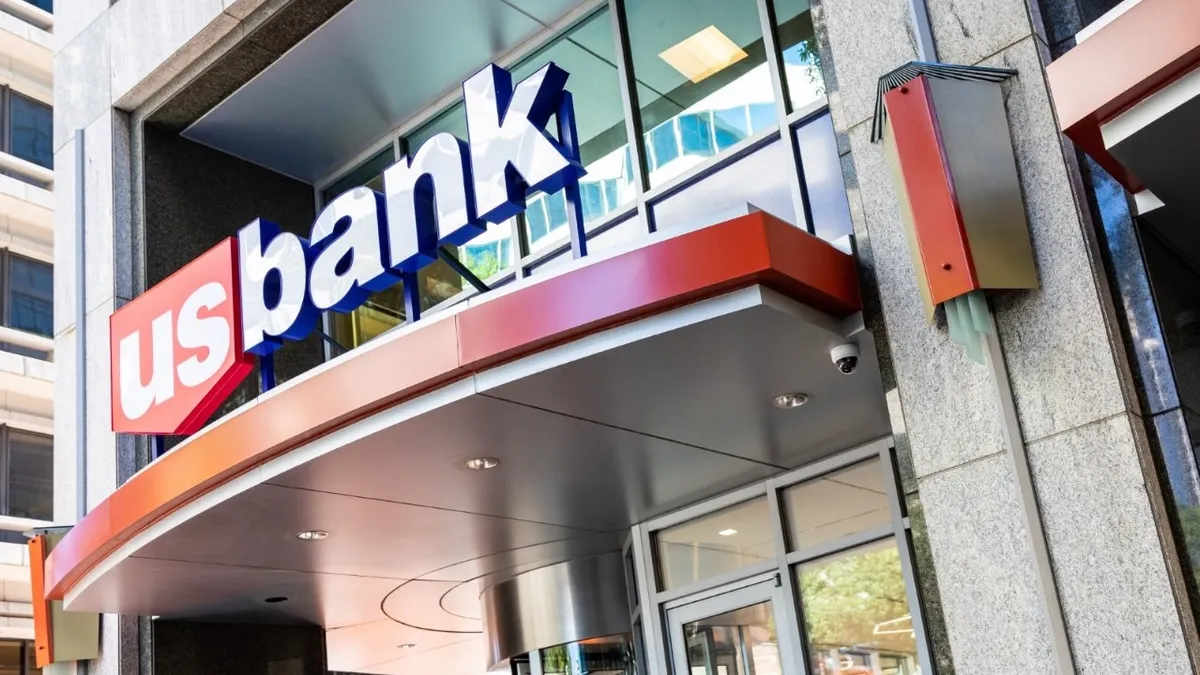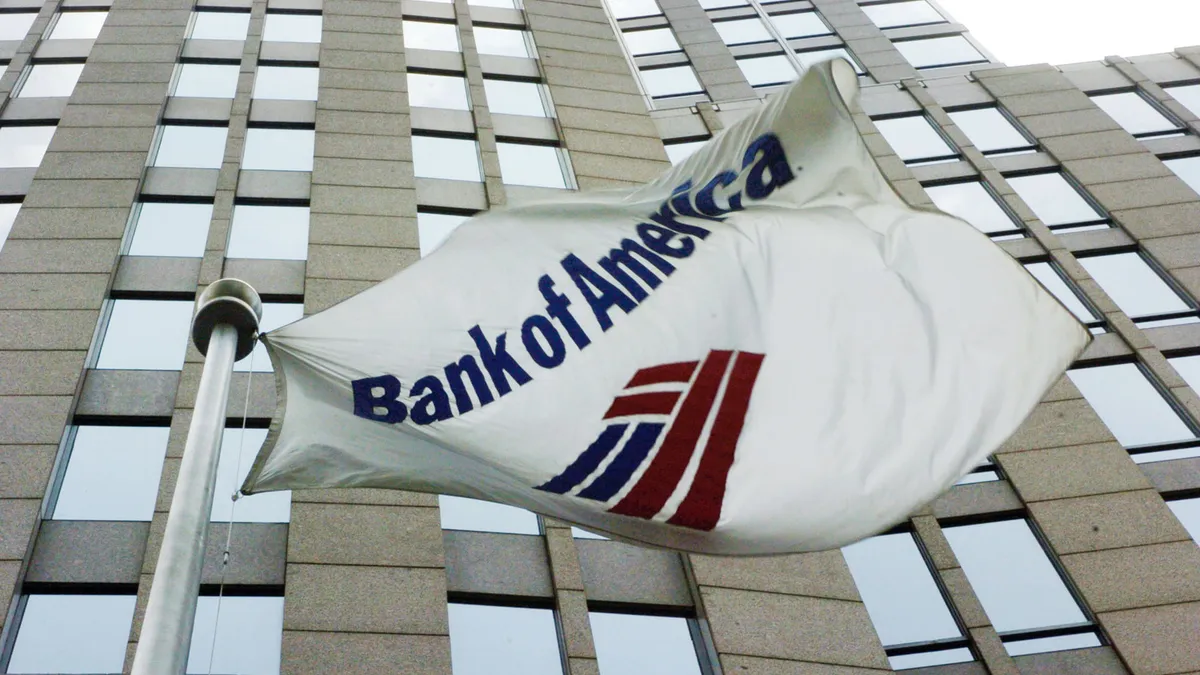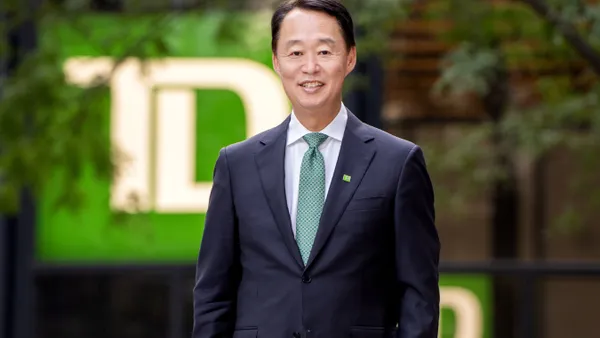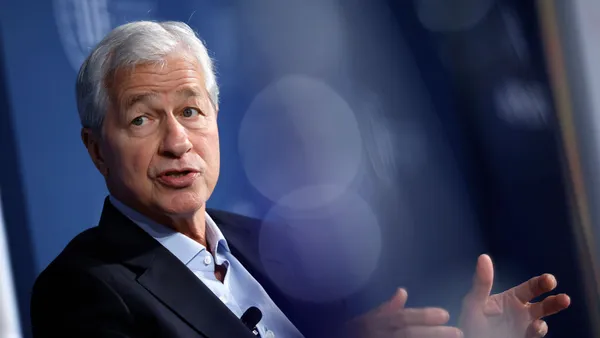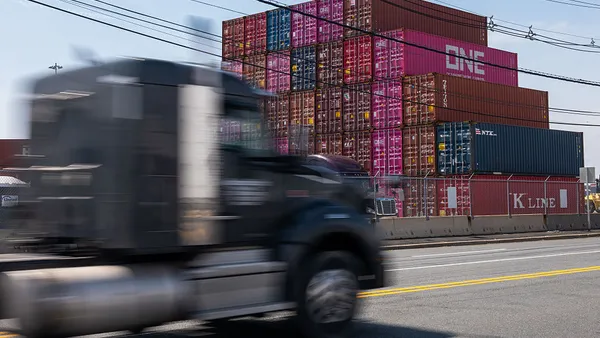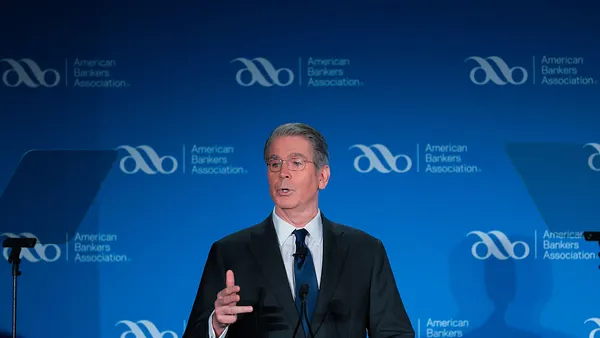As large companies mull their supplier bases and evaluate payment terms amid ongoing tariff volatility, it’s become an opportune moment for supply chain financing, a Wells Fargo executive said.
“There’s really a sweet spot here in the banking sector” in helping those businesses create working capital when they’re facing increased costs, said Jeremy Jansen, managing director of supply chain finance at the bank.
As the Trump administration has pursued its tariff agenda, seeking to tack levies onto imports from U.S. trade partners, businesses have had to develop various strategies and discuss how to handle additional costs from potential tariffs, he said.
Arguably, that’s been made more complicated by the president’s on-again, off-again, higher-then-lower approach.
After announcing on April 2 a 10% baseline tariff on U.S. imports and higher “reciprocal” duties on dozens of countries, President Donald Trump on Wednesday said he was pausing the “reciprocal” tariffs for 90 days, with the exception of those imposed on China. The tariff menu announced last week had tanked global markets and prompted predictions of recession.
For many companies, the lack of certainty around tariffs is making reaction plans difficult. Walmart CEO Doug McMillon on Wednesday pointed to a “very fluid” situation with many “variables,” saying, “We’re going to have to manage this as we always do, daily,” according to The New York Times.
U.S. trade policy could remain dynamic for some time, Jansen said, and the current environment has led to an increase in the discussions Wells Fargo is having with clients about working capital and the bank’s ability to provide liquidity to suppliers and buyers of products that need to be imported.
“There’s more interest from the clients to engage in the current environment, to talk about a litany of solutions,” he said. “There’s absolutely opportunities for financial institutions like ours to be engaging in those discussions with their clients.”
With the higher-than-expected tariffs announced April 2, flexible financing “will be essential to businesses,” Jansen said. A traditional supply chain finance program, where a lender is financing approved invoices from a buyer, can immediately inject capital into the supply chain, he said.
The San Francisco-based bank has about 70 employees globally in Jansen’s division, serving large corporate companies. The bank focuses on traditional trade products, such as import and export letters of credit and supply chain financing, which provides working capital facilities for suppliers and buyers through monetization of accounts receivable.
Clients of Jansen’s team include big retailers of consumer products or autos, and manufacturing companies that may have a vast network of suppliers.
Given Wells’ base of corporate clients, “my team is laser focused on those names,” Jansen said. His group partners with bankers and relationship managers “to make them aware of how we can help at a time like this,” he said.
A buyer client that’s a large retailer in the U.S., for example, may set up a supply chain finance program enabling them to get cash to suppliers quickly, and to stretch out payment terms, Jansen said. That creates working capital for both sides.
Large companies have been here before, when the first Trump administration turned to tariffs in 2018 and 2019, and have built playbooks on risk mitigation regarding tariffs, Jansen noted.
Tariffs announced April 2, however, were far broader in scope and larger than expected. Treasury Secretary Scott Bessent on Wednesday referred to levels announced last week as “a ceiling” for those who “don’t retaliate.”
“We’ve been overwhelmed with the response to come to D.C. and negotiate,” he said during an American Bankers Association event, before the announcement of a pause.
Fewer U.S. imports come from China now than in 2017, because much of that import activity shifted to other locations in Asia, Jansen noted. That may not be a viable strategy, though, if tariffs are geographically broader, as Trump indicated April 2. Still, tariffs on China are far higher: Trump increased those to 125% Wednesday.
Views vary by industry on how much of the tariffs can be distributed and to whom, Jansen said, as companies assess whether they’ll pass costs along to consumers. Corporate profit margins have increased since 2018 and 2019, “so there’s a little more cushion … to absorb some of that,” he said.





